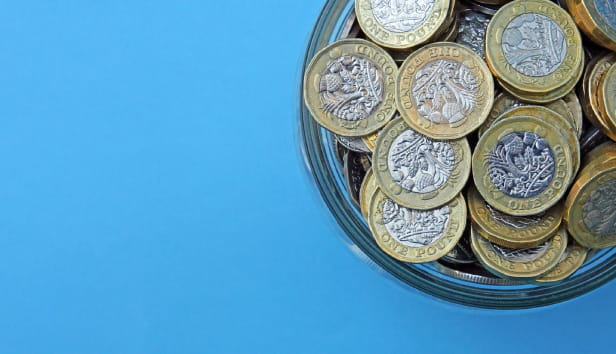

This article is for general guidance only and is not financial or professional advice. Any links are for your own information, and do not constitute any form of recommendation by Saga. You should not solely rely on this information to make any decisions, and consider seeking independent professional advice. All figures and information in this article are correct at the time of publishing, but laws, entitlements, tax treatments and allowances may change in the future.
If you’re hit by an unexpected car breakdown or run into boiler issues, having a pot of cash to fall back on reduces the chance of getting into debt to pay the bills.
While people in older age groups tend to have more savings, some don’t have a fund big enough to cover such emergencies.
According to a financial resilience study by Royal London, almost one in six (15%) people aged between 50 and 69 have no savings at all.
Various experts suggest three to six months’ worth of living expenses as the ideal emergency fund, with this figure rising to one to three years' worth for retirees.
“Having a specific fund targeted to helping you cope with a financial shock enables you to feel in control of your money – which then allows you to no longer worry about something that may or may not happen,” says Chris Budd, former financial planner and host of the Financial Wellbeing podcast.
This, he suggests, doesn’t just improve financial resilience, it can also go a long way to improving emotional wellbeing.
“By having a clearly defined emergency fund, you can remove a money worry, allowing you to focus on the things in your life that will bring you joy.”
While having a larger emergency fund is recommended, even saving small amounts will help you sleep better, according to a study from the University of Bristol – so just getting started can be a big step towards better mental and financial wellbeing.
Retirees are advised to have a bigger emergency fund than those still working because they can be on lower or fixed incomes.
This makes it more difficult to rebuild emergency savings if some – or all – of the money needs to be spent.
Sarah Coles, Head of Personal Finance at Hargreaves Lansdown, points out in moments when markets fall, pension growth might be affected and having an emergency fund can help prevent the need to remove precious money from a retirement pot.
“If retirees are relying on pension drawdown for at least part of their income, they may also have fluctuations in their pension income because they don’t want to erode their capital too much during periods of low income or growth,” she says.
“Having a big savings pot means they can use that to top up their income for a period, and then dip into their pension to top up their savings when the timing is better.”
According to Hargreaves Lansdown’s Savings and Resilience Barometer, for the average person pre-retirement in the UK, three months' worth of essentials costs £5,230 and six months’ is £10,640. The figures fall slightly for the over 60s, with a year’s expenses typically at £15,403.
But these are just averages – exactly how much someone needs to save will be influenced by their monthly expenditure.
Sarah Pennells, Consumer Finance Specialist at Royal London, says: “In order to work out how much you should set aside, start by adding up your regular expenses, such as energy, broadband, phone and water bills, plus things like food bills and transport costs.
“Don’t forget any irregular expenses, such as car or home insurance, that you pay for annually rather than monthly, or the cost of getting your car serviced and MOT’d.
“There may be expenses that you could cut back if you needed to, but make sure you’re realistic about how much you might need.”
There are a variety of online emergency fund calculators – from banks to financial information sites - to be found online that help do the sums.
.jpg?sc=max&mw=800&h=450&la=en&h=731&w=1300&hash=F6DD50BB4C452280E8AF6DD32E0AF9AE)
When planning a fund, thinking about the situations where it would be ‘allowed’ to use it is useful, and agreeing on these with a partner, if relevant, helps set strong safeguards.
“The ‘emergencies’ your savings may be earmarked for once you’re retired will be different to those you may have had in mind while you were working,” says Pennells.
“Assuming you gave up work entirely when you retired, losing your job won’t be an issue.
“Instead, the emergencies are more likely to arise from an unexpected expense, whether that’s maintenance for your home, or car or boiler repairs.
“Meanwhile, private hospital admissions have increased by 7% in 2023 – so you may want to pay for an operation or procedure privately to avoid lengthy NHS waiting lists.”
By having a defined set of circumstances for when the fund can be spent, it makes it easier to practice ‘mental budgeting’, where you’re able to allocate costs and spend in your mind as you go - and studies have shown that those who employ this technique have a greater level of financial resilience and wellbeing.
If starting from scratch, aim to save a smaller amount, and gradually increase it to the desired level.
If still working, set up a standing order for the day after pay day to transfer a set sum into savings each month. Investment returns can also be directed into an emergency savings fund.
If income is a little smaller, or fixed, and it’s hard to allocate money from a budget, exploring tools and services that do the hard work automatically and boost saving power little by little can be useful.
“Lots of banks offer a ‘save the change’ option where debit card spending is rounded up to the nearest pound and ‘change’ swept into your savings,” Sue Hayward, consumer and personal finance expert, told us for a previous piece on how to build a budget.
Other solutions – such as savings apps – will monitor spending to help understand what savers can put away each month – offloading the decision.
If someone has a private pension, one option is to use all, or part of, their 25% tax-free lump sum to kick off, or contribute to, emergency savings.
However, when considering options for accessing a pension, it’s always a good idea to consider independent financial advice first.
There are several options when it comes to finding the best home for an emergency fund. Anna Bowes, founder of SavingsChampion.co.uk, says: “Getting into the savings habit is the most important step and the good news is that there are regular savings accounts available that can help.”
Keeping a good portion of savings in an easy access savings account allows savers to get hold of the cash when it’s needed – crucial when saving for an emergency.
Easy or instant access accounts normally allow for money withdrawals whenever needed, making them ideal for an emergency fund.
These, at the time of writing, were paying about 5% - but it's important to make sure there's ready access to the money when needed too.
Once plans for emergency savings have been made and decisions made on what to use them for, it’s important to stay on top of how they’re performing.
Keeping the right amount in an easy access account is important but reviewing the rates received and switching whenever needed is also necessary to keep money working as hard as possible.
Keep an eye on things like inflation and the impact it has on the value of an emergency fund – while inflation has receded to the Bank of England’s target of 2% at the time of writing, it could fluctuate in the coming years.
At times of rising inflation or changing interest rates, running the numbers is key.
If, for example, an emergency fund is £12,000 a year and the cost of essentials rises 4%, then a saver would need to boost their savings by another £460 a year – either through putting it in a higher-interest account to help offset inflation or topping it up with other income.
Finally – if it's necessary to dip into a fund, it’s important to have a plan to replace it again when possible.
Using the skills developed from building it in the first place will come in useful, bringing the peace of mind that comes from having a constant buffer.






Understand how your money is taxed in retirement and learn simple ways to reduce your bill.

